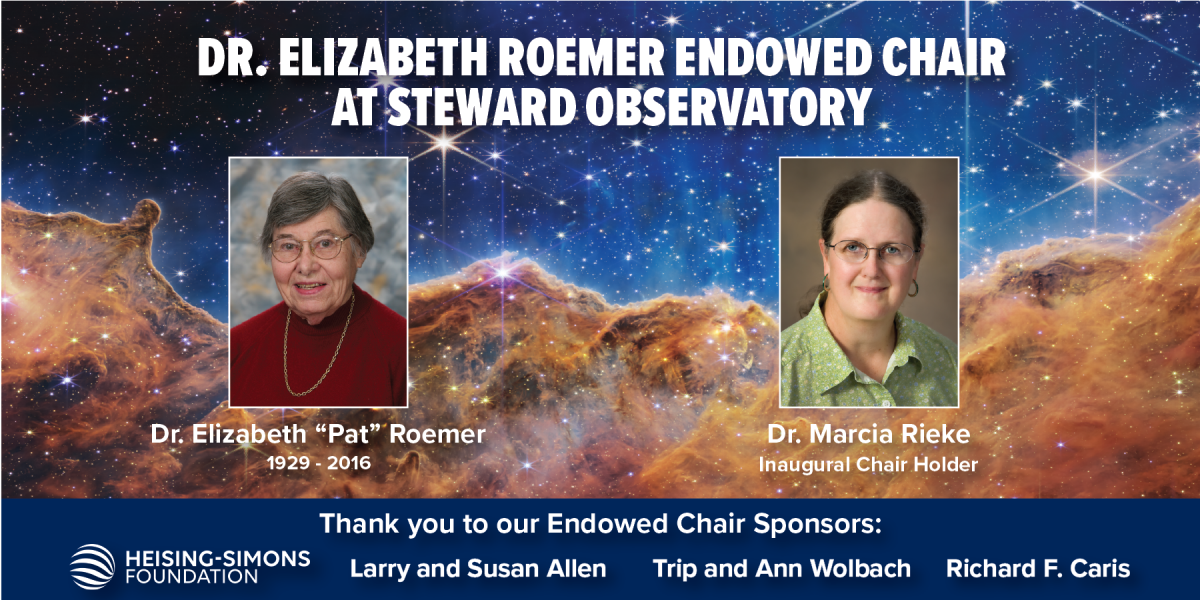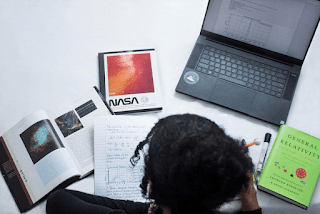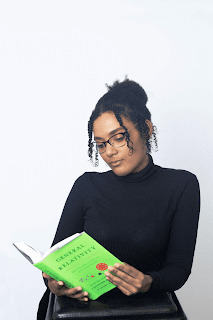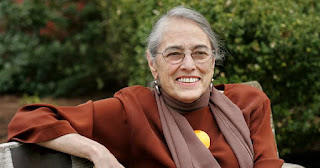By Kevin B. Marvel, Executive Officer
Elizabeth Scuderi, Director of Meeting Services
Michelle Stevenson, Senior Meetings Manager
 |
| Image Credit: AAS |
The American Astronomical Society (AAS) organizes the largest annual astronomical conferences worldwide and has been doing so for decades. Managing large, complex gatherings of people is difficult and requires specialized expertise and experience, which is why the AAS employs multiple full-time professionals who help us hold successful conferences year in and year out. We supplement this direct support with a range of contractors, partnerships with the local meeting venues and hotels and through support from experienced AAS staff who are not directly responsible for the conferences but provide significant help and support to carry them out. Additionally, all our conference organization activities are overseen by the AAS Board of Trustees, who are the fiduciaries of the AAS as a non-profit corporation, and who delegate most responsibility for the scientific organization of the conferences to the AAS Vice Presidents.
The AAS provides similar conference support for our divisions, usually 3-4 additional stand-alone conferences each year and supports the AAS Topical Conference Series, usually only one but sometimes two additional conferences each year. The Society has built-up significant experience carrying out scientific conferences and regularly receives compliments from attendees and exhibitors. Over the years, we have documented our processes and communicated the challenges we face to the community we serve (1). We always seek to improve and enhance our meetings, while striving to keep costs as low as possible, goals that are often at odds with each other.
In addition to taking steps to ensure that AAS meetings are harassment-free environments by establishing and enforcing our anti-harassment policy (2), the Society takes steps to ensure the safety and security of our conference attendees while on site and has advised attendees to take steps to ensure their own safety while not at the conference venue or hotel. AAS conferences take place in large urban centers because they have the conference infrastructure to host large meetings, but they also come with the burdens that all cities face, like crime, petty and otherwise.
Because each conference is different and the safety and security environment for any given city changes with time, we take a customized approach to security for each conference, while always following certain steps for all meeting venues. First and foremost, we establish strong working relationships with the venues we contract with to hold the meeting. This includes convention centers and hotels. We also interact regularly with representatives of the locality’s convention and visitor’s bureau, who represent the city and seek to ensure the smooth support for and operation of conferences that come to their town. These key contacts provide us with updated information on the safety environment for the locality, guidance to share with our meeting attendees to help ensure their safety while offsite and connections to local law enforcement and venue security staff. All relevant contact details are compiled in our meeting logistics book, which is prepared for each conference and shared with and reviewed in advance by all staff members.
 |
| Image Credit: AAS |
The Society employs venue-provided staff to guard key entrances to the conference venue and to enforce badging requirements. They circulate through the meeting venue on a regular basis and are in immediate contact with our meeting staff members in case of any security or safety challenge. Badging checks, though found annoying by some attendees, are critical for ensuring conference safety and security. We have faced numerous instances where individuals have attempted to access our conferences without a badge. We have a zero tolerance for this activity and all staff on site know to inform our meeting staff or venue security if someone is identified in the meeting venue without a badge. Normally, individuals without a badge have simply forgotten or lost their badge, which is why our registration desk is often located outside of badging checkpoints. In other cases, people who have infiltrated the conference and have not registered and do not belong at the meeting are physically removed. In some cases, like in Seattle, we have a badging checkpoint before attendees can access the registration desk. Placement depends very much on the local venue layout, but in these cases, we instruct the badge checkers to direct badgeless attendees to the registration desk and sometimes we have them escort badgeless individuals to the registration desk. We have occasionally retained additional staff or consultants to provide specific support for our conferences or for events at our conferences. For example, we have enhanced security from time to time for public talks or events, as we have less or no control over who can access our conference venue when we open the doors to the public.
Ensuring comprehensive badge checking means that access points to the meeting must be limited in number and staffed 100% of the time. This can sometimes impede speedy access for conference attendees, especially on the first day or at times when everyone is trying to gain access to the meeting venue, like when plenary talks take place. We work very hard to minimize the impact on attendee access while maintaining a vigilant watch to ensure those not authorized to access the event cannot. A fantastically challenging venue to manage has been the Hawaii Convention Center, which has numerous access points into the main atrium area and even access points from the convention center garage that are difficult, if not impossible, to monitor effectively. Working with center security we have found ways to minimize access to the best extent possible.
For the IAU General Assembly in 2012, we had enhanced security concerns that mandated we keep tight control on the convention center entrance doors. Unfortunately, meeting attendees would regularly prop open the doors to the atrium to avoid having to go through the badge-controlled entrance or open the door to others seeking access. We had to keep staff present to ensure such door propping did not take place and some attendees cursed at and threatened meeting staff for requiring them to use the proper entrance. This kind of behavior is frustrating to staff and difficult to manage. We understand that security measures can be an inconvenience, but we also need cooperation from all attendees to ensure everyone’s safety and security. Too often we find some conference attendees do not understand or care about the bigger picture and only view their own inconvenience as paramount.
It is also worth mentioning that we are concerned with the health and well-being of our attendees as well. Thankfully, most conference venues provide health safety staff on-site. Some venues have on-site medical staff by default, or we have paid for such support when deemed necessary. AAS staff periodically receive CPR and First-Aid training (we’re due for training again this coming spring) to help respond in the moment.
An example of the benefit of this training was the quick response of our Press Officer, Rick Fienberg, to a conference attendee at our Miami meeting back in 2010. We had just had our First-Aid training before the meeting took place, which allowed Rick to properly respond to an attendee who fainted at the opening reception due to (it ended up) dehydration, travel exhaustion and a lack of eating enough food during their travel to the conference. Rick properly responded and asked another staff member to get the on-site medical staff, who responded promptly and got the attendee the care and attention they needed.
We have also had a cardiac event at one of our DC meetings that was also promptly dealt with by AAS staff and the on-site medical team, with the attendee receiving prompt medical attention at a nearby hospital and traveling home safely later in the week. Thankfully, we have had only a handful of health issues at our conferences, but we strive to be prepared for any eventuality, while always relying fundamentally on local emergency response services for any serious situation. I will leave out our responses to COVID-related issues at our meetings, only to say that when we were informed of individuals testing positive and self-isolating, we reached out to them individually to provide any care or assistance they requested and followed up to see how they were doing. Currently, masks are not required, but strongly encouraged for AAS243. We are monitoring hospitalization statistics locally and nationally and the Board will make a final decision as to whether masks will be required or not in early December.
Other safety concerns have been dealt with in unique ways. The IAU General Assembly meeting in 2012 that was held in Hawaii presented a special situation as we were providing support to the IAU. Threats of varying types were received in advance of the meeting, which heightened our attention to security. We hired a consultant who provided contact and communication with local law enforcement and planning sessions were held in advance to discuss responses to a variety of concerns from interruption of the conference by protesters to bomb threats and everything in between.
Additionally, social media channels were monitored in advance of the meeting and some individuals with substantial criminal records were identified as potential threats to the orderly operation of the conference. Through local law enforcement and a PR firm we retained, we reached out to local community organizers and facilitated a peaceful protest during the conference, which included a meeting between the IAU leadership and local community representatives. We also provided water and bathroom access for any protestors who needed these resources. Similarly, when the AAS met in Honolulu in January 2020, we reached out to the leaders of the Maunakea protectors and arranged for a leadership meeting and representation at the conference itself. This was highlighted in local media as a positive set of actions and the conference was not disrupted and remained safe for all.
In 2017, we met in Texas and shortly before our conferences, a law was changed making it legal to carry a firearm in almost any venue. Luckily, a provision in the law allows for institutions to take steps to declare their meeting or conference a gun-free zone and we followed those steps with the advice of the local venues to ensure that our conference remained a gun free zone. We review the local legal landscape in the runup to our conferences to see if there are any issues that could negatively impact our attendees or threaten their safety while participating in our meetings. When we can, we take appropriate steps to ensure safety for all attendees.
 |
| Image Credit: AAS |
We maintain and regularly update our Crisis Communication plan, which is used by elected officers and staff to respond appropriately in case of any crisis we may encounter, whether at our conferences or in other situations. This supplements our business continuity and crisis plan, which was initially drafted up after 9-11 and a new, updated version will go to the Board for approval in January 2024. This plan provides actionable steps to take in the case of an unexpected crisis, for example, a major earthquake or other natural disaster taking place during one of our conferences.
Although we wish we could, we cannot take steps to directly ensure the safety and well-being of our conference attendees when they are not at the meeting venue or hotel. What we can do (and do) is advise attendees of steps to take to ensure their own safety when offsite, provide contact information for local law enforcement (9-1-1 works everywhere) or AAS meetings staff and remind them to travel together (and remove their badges!) and not to put themselves in harm’s way by staying out late, visiting known high-crime locations or venues or taking on other safety/security risks. Local law enforcement often provides visitor safety tips for their community (3) and we provide information for our attendees based on this advice augmented with additional input from the convention and visitor’s bureau.
For the upcoming meeting in New Orleans, we have been provided a range of detailed information and recommendations from the hotels and the convention center. The New Orleans Visitors Bureau has also shared their online Visitor Safety Statement, which we will be sharing with our conference registrants in advance of the meeting in January. Of special note is the Downtown Development District’s Public Safety Ranger program (4), which is active in part of downtown and the French Quarter (the convention center and our conference hotels are not in their coverage area).
There have been unfortunate incidents that have negatively impacted people at our and other scientific conferences, thankfully limited in number and impact, but events have happened. Often, the conference attendee innocently puts themselves in harm’s way or did so without thinking about the ramifications of their decisions.
I am reminded of some events at the IAU General Assembly held in Rio de Janeiro and at one of our DC meetings.
- One attendee, ignoring the advice of local astronomers, conference organizers and the advice of hotel staff at check-in, walked down to the beach to photograph the rising moon well after dark. The glow of their iPhone attracted petty thieves who threw sand at him, jumped on him and pushed him to the ground, grabbed his iPhone and ran off.
- Another group of South American astronomers, returning to their hotel after a late dinner, strayed a few blocks too far away from the main thoroughfare and were held up at knife point by a small group of individuals, who took their money and phones and ran off, luckily without injury.
- In the worst example, a group of people who were out late at night in a known high-crime area became the victims of a group of muggers. A meeting attendee, also out late at night attempted to intervene and was seriously injured, requiring hospitalization.
Thankfully, we have not had these kinds of events take place at our meetings with any regularity, but some negative events have taken place, two or three significant ones in the past 30 years. They usually happen late at night in parts of the city where we are meeting that are known to be unsafe or are hotspots for nightlife. Because these situations are often resolved by law enforcement, we do not have complete information or records on what has taken place.
In conclusion, the AAS takes the safety and security of our meeting participants—attendees, exhibitors, support contractors and staff—very seriously. We approach each location as a unique situation and do not use a ‘cookie-cutter’ approach to meeting security. As needed, we bring in additional on-site support, involve law enforcement and sometimes other resources to manage each conference appropriately from a safety perspective. We cannot provide comprehensive safety for attendees when they are offsite. We can and do provide appropriate security information when appropriate and we always work with local venue representatives and law enforcement as needed. Finally, we are always open to new ideas and ways to enhance the safety and security for our conferences, recognizing that perfect and complete safety is a goal impossible to reach. We therefore plan for eventualities and focus on being prepared to handle any situation that may arise, while we look to our attendees to take personal responsibility for their safety and well-being at all times by making sensible decisions and being informed and prepared for the location they are visiting.
Comments can be posted below and emails can be sent to meetings_at_aas.org (replace _at_ with @).
References:
(1) Alexander, D.T. (2003). Organizing and Managing American Astronomical Society Meetings — from Preparation and Plans to Science Presentations. In: Organizations and Strategies in Astronomy. Astrophysics and Space Science Library, vol 296. Springer, Dordrecht. https://doi.org/10.1007/978-94-010-0049-9_15; The Management of AAS Meetings, a chapter in Organizations, People and Strategies in Astronomy II, Venngeist 2013; How We Select Venues; AAS Newsletter (Nov/Dec, 2011); If It's Virtual, Why Does it Cost Anything at All?; Why is the AAS Meeting so Expensive?
(2) Anti-Harassment Policy for AAS & Division Meetings & Activities; Why Your Meeting Needs a Harassment Policy
(3) Seattle Police Department, Visitor Safety Tips; New York City, Crime Prevention and Safety Tips
(4) Downtown Public Safety Rangers: The Downtown Development District (DDD) created the Public Safety Ranger program as an integral element of Downtown’s public safety network. The Public Safety Rangers are a non-commissioned force of safety professionals who patrol Downtown on foot and on bicycle. They act as extra eyes and ears for the police and the DDD. Rangers are customer-friendly and provide visible coverage throughout Downtown.
Visitors Downtown also can utilize the DDD Public Safety Rangers, who are on duty seven days a week from 6 a.m.-10 p.m. Downtown SafeWalk escorts are offered free of charge within the Downtown DDD boundaries. Call or text 504-415-1730 to check availability.










